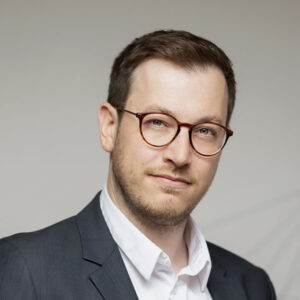Kurt-Christoph von Knobelsdorff, Managing Director (Spokesperson) of NOW GmbH, presented a notification of funding in the amount of 2.4 million euros to Christian Mehnert, Managing Director of Kreiswerke Barnim for the procurement of four waste collection vehicles with alternative fuel cell technology.
Electric mobility is a significant factor for climate protection and resource conservation. This technology has already entered many areas of road transport. Now there are also alternatives in the commercial vehicle sector and Barnimer Dienstleistungsgesellschaft (BDG), a subsidiary of Kreiswerke Barnim, is the first Brandenburg waste management company to date that will deploy fully-electric waste collection vehicles.
The procurement of four waste collection vehicles with alternative fuel cell technology will be funded under the National Innovation Programme for Hydrogen and Fuel Cell Technology (NIP II) with a total of 2.4 million euros by the Federal Ministry of Transport and Digital Infrastructure. The funding guideline is coordinated by the National Organisation Hydrogen and Fuel Cell Technology (NOW GmbH) and implemented by Project Management Jülich (PtJ).
“This year I have been to the Barnim district twice within a matter of months to acknowledge regional activities using hydrogen in road and rail transport and support these future-focussed measures,” says Knobelsdorff and adds: “The changeover to climate neutrality is the challenge of the century that can only be met through technology-neutral policy. The Barnim district is setting the standard here and is using existing available technologies according to their needs. I wish all participants continued openness in this regard and I am delighted to be able to support such innovative and open partners so close to Berlin.”
Christian Mehnert impressively summarises what the district already has to offer in terms of mobility: “I think we can say that we in the Barnim district are among the pioneers in the area of electric mobility in Brandenburg. After all, 10% of the public charging infrastructure for electric vehicles that has been installed so far in the entire state can be found in Barnim. We are now applying for the sixth expansion phase for the installation of public charging infrastructure. With the community-oriented mobility service BARshare, we are currently setting the bar in the field of electric car sharing in the rural area. Together with our partners ENERTRAG and NEB, we have been working since May 2021 on the development of an infrastructure for the production and use of green hydrogen on regional railway line 27 (Heidekrautbahn). We are all the more pleased to now take a step further towards climate neutrality in the field of waste collection vehicles.
It is expected that in the third quarter of 2022, four fuel cell-operated waste collection vehicles will be added to the currently 40-strong BDG fleet of vehicles and will be used in the Bernau area. A total of 910,000 kilometres are covered annually on collection rounds and until now, 520,000 litres of diesel used. When fuel cells are used as a drive technology, only water and oxygen are produced.
“This is an absolute win for the climate in the city of Bernau”, emphasizes Bernau’s mayor, André Stahl. “In addition to six hydrogen buses that will soon roll out through the city, waste collection will now also be quieter and more climate-friendly.”
The new buses will be refuelled with green hydrogen, manufactured from renewable energy. The filling station will be built by Barnimer Busgesellschaft in Bernau for refuelling hydrogen buses for joint use with the BDG.
“2021 can already now be considered the first year of using hydrogen in the district of Barnim”, says Dr. Wilhelm Benfer, Head of the Office for Sustainable Development, Land Registry and Surveying in the Barnim district, referring to the numerous projects. “Since the beginning of the year, thanks to support from the national as well as state governments, three pioneering hydrogen projects have been launched in the district. Together with the already established mobility projects, the district is gradually evolving into an electric mobility region, in which many elements come together and click.”

